Model Context Protocol (MCP) finally gives AI models a way to access the business data needed to make them really useful at work. CData MCP Servers have the depth and performance to make sure AI has access to all of the answers.
Try them now for free →Model, Search, and Visualize Live HCL Domino Data in ThoughtSpot
Use CData Connect Cloud to connect to live HCL Domino data for modeling, searching, and visualizing.
ThoughtSpot is a cloud-based analytics platform that uses artificial intelligence (AI) and natural language processing (NLP) to help users analyze data and make decisions. When paired with CData Connect Cloud, you get instant, cloud-to-cloud access to HCL Domino data for visualizations, dashboards, and more. This article shows how to connect to HCL Domino and build visualizations from HCL Domino data in ThoughtSpot.
CData Connect Cloud provides a pure SQL Server, cloud-to-cloud interface for HCL Domino, allowing you to easily build models and visualizations from live HCL Domino data in ThoughtSpot. As you build visualizations, ThoughtSpot generates SQL queries to gather data. Using optimized data processing out of the box, CData Connect Cloud pushes all supported SQL operations (filters, JOINs, etc) directly to HCL Domino, leveraging server-side processing to quickly return HCL Domino data.
Configure HCL Domino Connectivity for ThoughtSpot
Connectivity to HCL Domino from ThoughtSpot is made possible through CData Connect Cloud. To work with HCL Domino data from ThoughtSpot, we start by creating and configuring a HCL Domino connection.
- Log into Connect Cloud, click Connections and click Add Connection
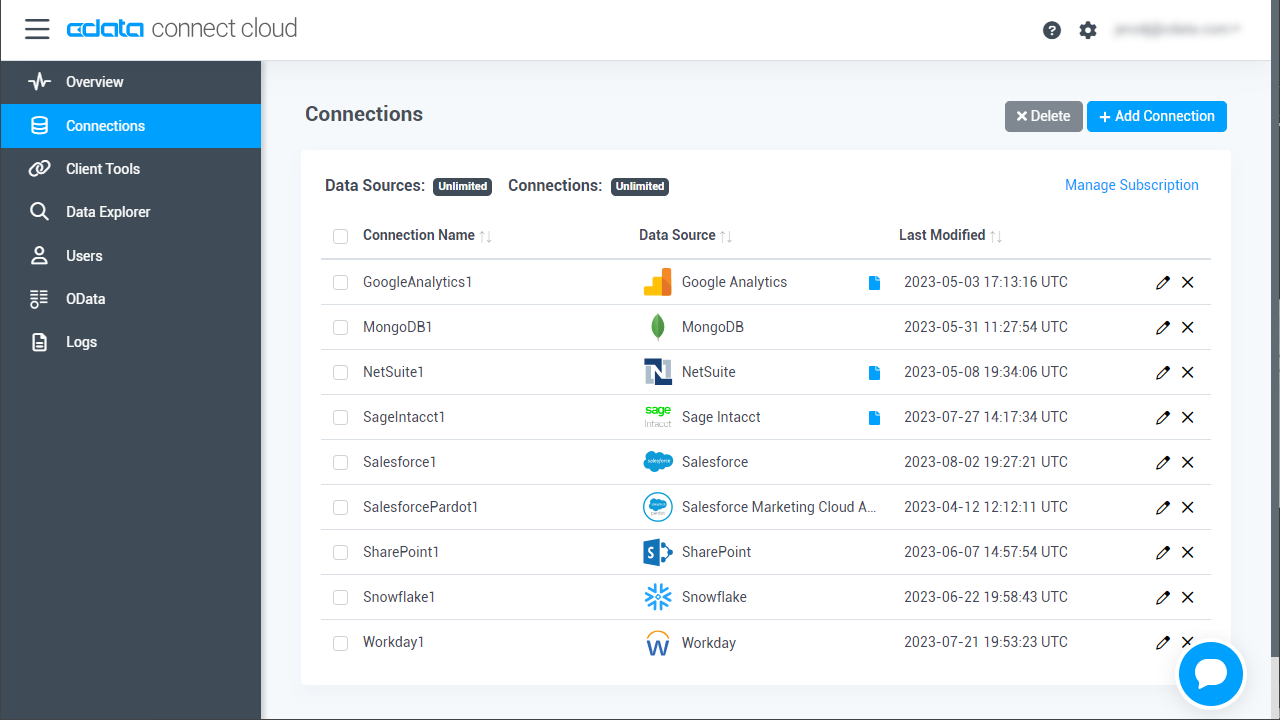
- Select "HCL Domino" from the Add Connection panel
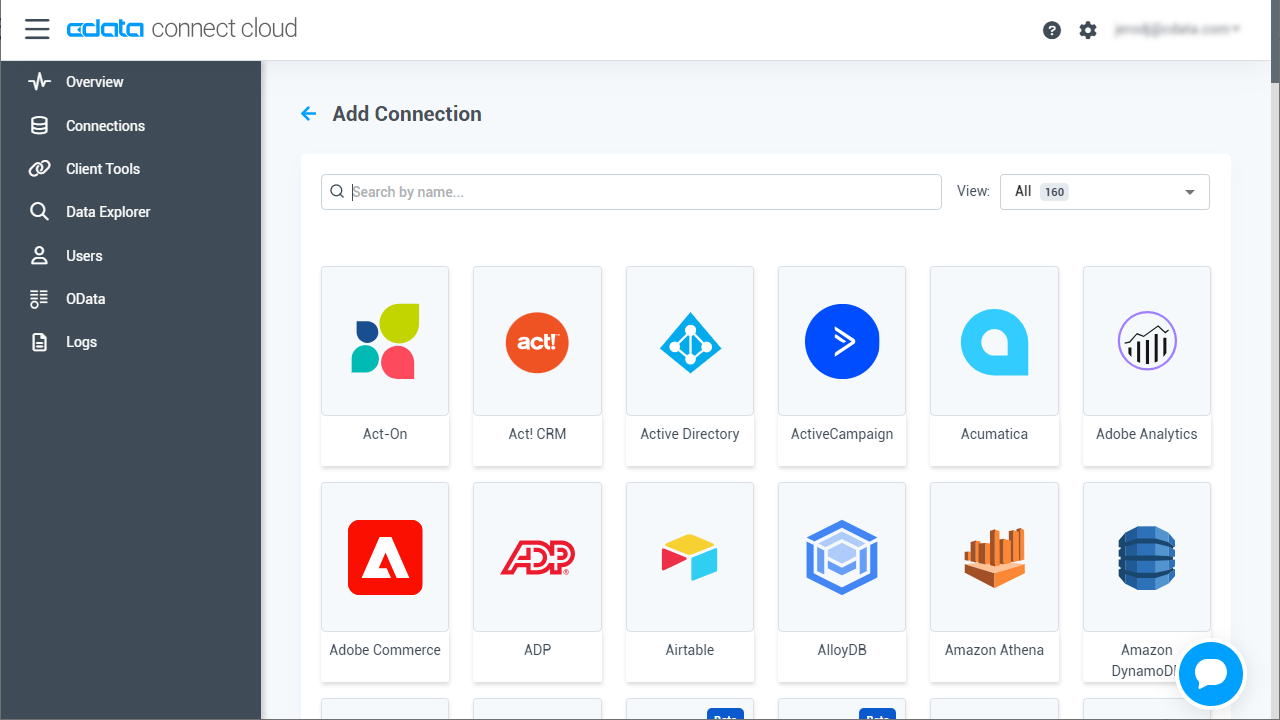
-
Enter the necessary authentication properties to connect to HCL Domino.
Connecting to Domino
To connect to Domino data, set the following properties:
- URL: The host name or IP of the server hosting the Domino database. Include the port of the server hosting the Domino database. For example: http://sampleserver:1234/
- DatabaseScope: The name of a scope in the Domino Web UI. The driver exposes forms and views for the schema governed by the specified scope. In the Domino Admin UI, select the Scopes menu in the sidebar. Set this property to the name of an existing scope.
Authenticating with Domino
Domino supports authenticating via login credentials or an Azure Active Directory OAuth application:
Login Credentials
To authenticate with login credentials, set the following properties:
- AuthScheme: Set this to "OAuthPassword"
- User: The username of the authenticating Domino user
- Password: The password associated with the authenticating Domino user
The driver uses the login credentials to automatically perform an OAuth token exchange.
AzureAD
This authentication method uses Azure Active Directory as an IdP to obtain a JWT token. You need to create a custom OAuth application in Azure Active Directory and configure it as an IdP. To do so, follow the instructions in the Help documentation. Then set the following properties:
- AuthScheme: Set this to "AzureAD"
- InitiateOAuth: Set this to GETANDREFRESH. You can use InitiateOAuth to avoid repeating the OAuth exchange and manually setting the OAuthAccessToken.
- OAuthClientId: The Client ID obtained when setting up the custom OAuth application.
- OAuthClientSecret: The Client secret obtained when setting up the custom OAuth application.
- CallbackURL: The redirect URI defined when you registered your app. For example: https://localhost:33333
- AzureTenant: The Microsoft Online tenant being used to access data. Supply either a value in the form companyname.microsoft.com or the tenant ID.
The tenant ID is the same as the directory ID shown in the Azure Portal's Azure Active Directory > Properties page.
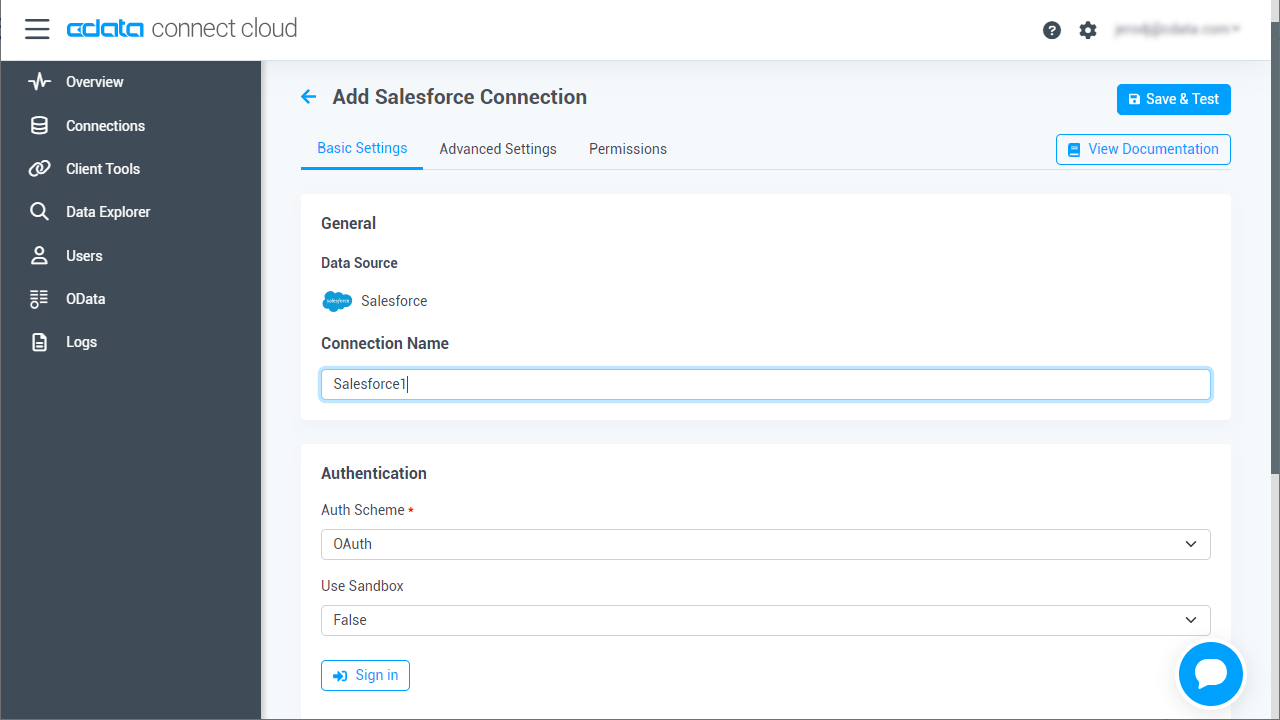
- Click Create & Test
- Navigate to the Permissions tab in the Add HCL Domino Connection page and update the User-based permissions.
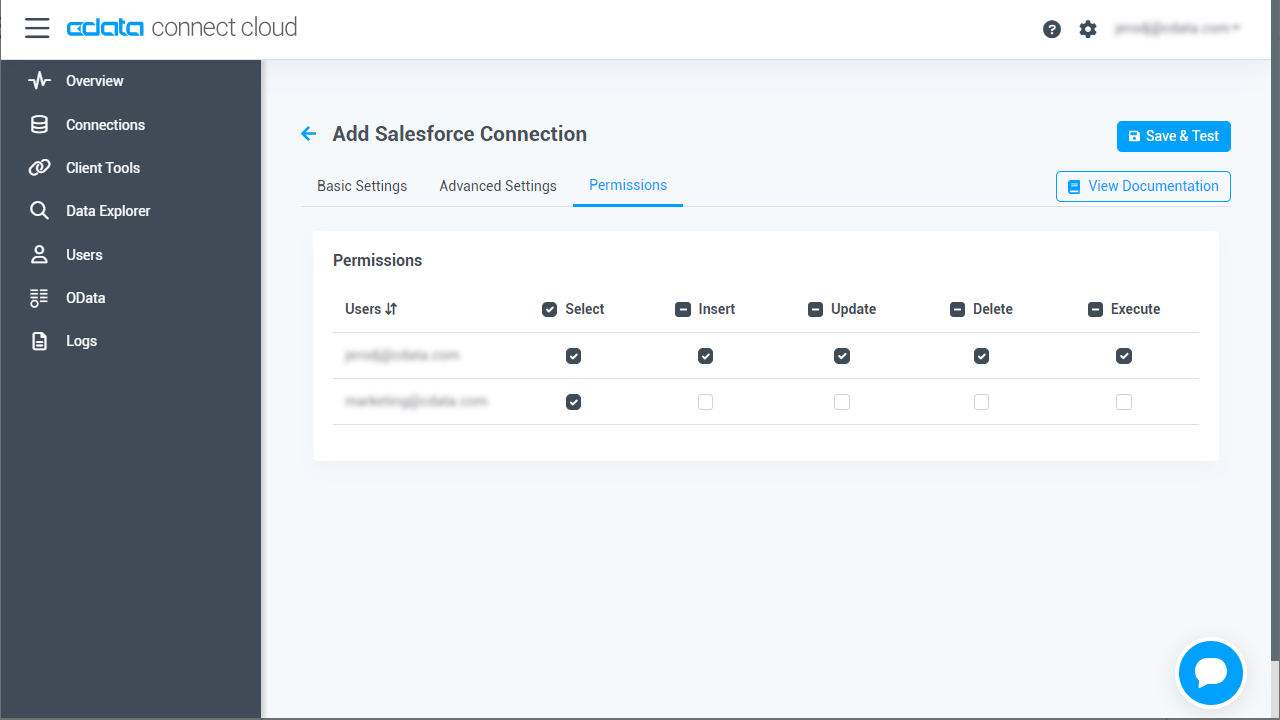
Add a Personal Access Token
If you are connecting from a service, application, platform, or framework that does not support OAuth authentication, you can create a Personal Access Token (PAT) to use for authentication. Best practices would dictate that you create a separate PAT for each service, to maintain granularity of access.
- Click on your username at the top right of the Connect Cloud app and click User Profile.
- On the User Profile page, scroll down to the Personal Access Tokens section and click Create PAT.
- Give your PAT a name and click Create.
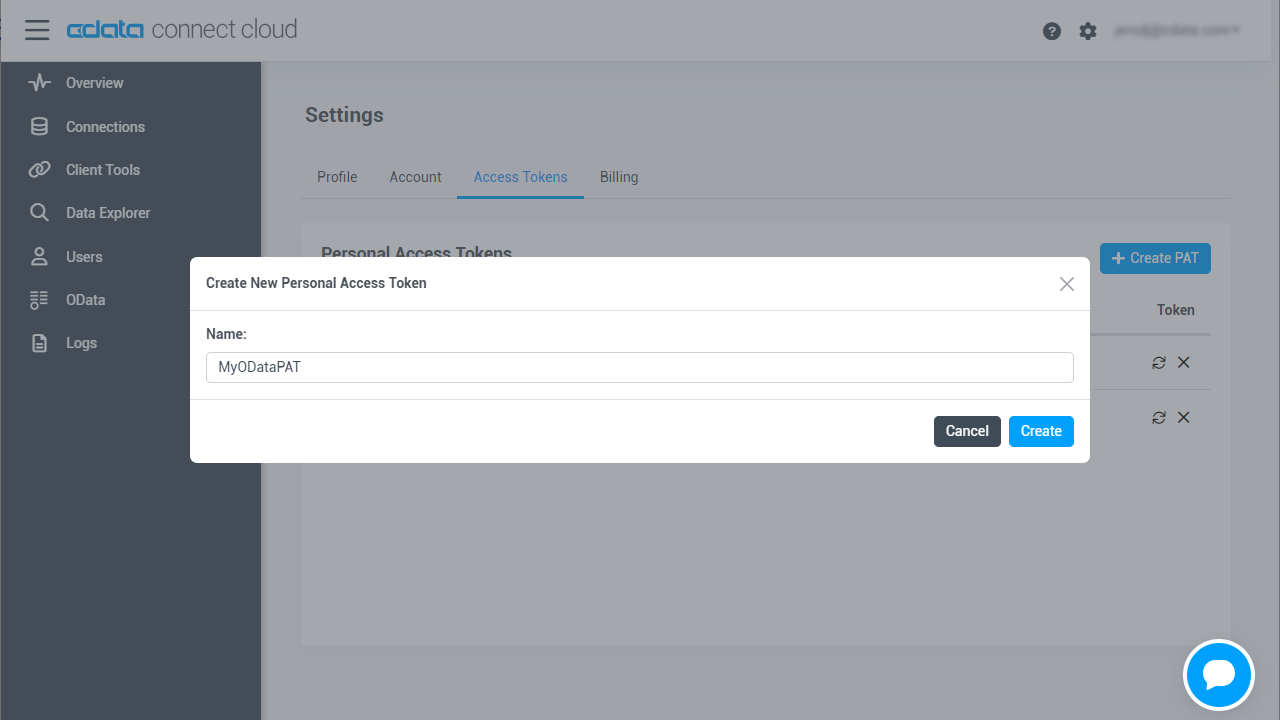
- The personal access token is only visible at creation, so be sure to copy it and store it securely for future use.
With the connection configured, you are ready to connect to HCL Domino data from ThoughtSpot.
Model, Search, and Visualize Live HCL Domino Data in ThoughtSpot
To establish a connection from ThoughtSpot to the CData Connect Cloud Virtual SQL Server API, follow these steps.
- Log into ThoughtSpot
- On the top navigation bar, click Data.
- Click Create new > Connection.
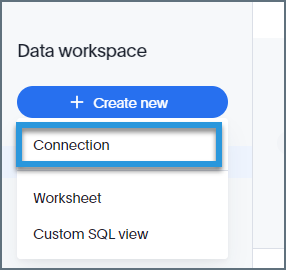
- Name the connection and click "SQL Server" as the data warehouse.
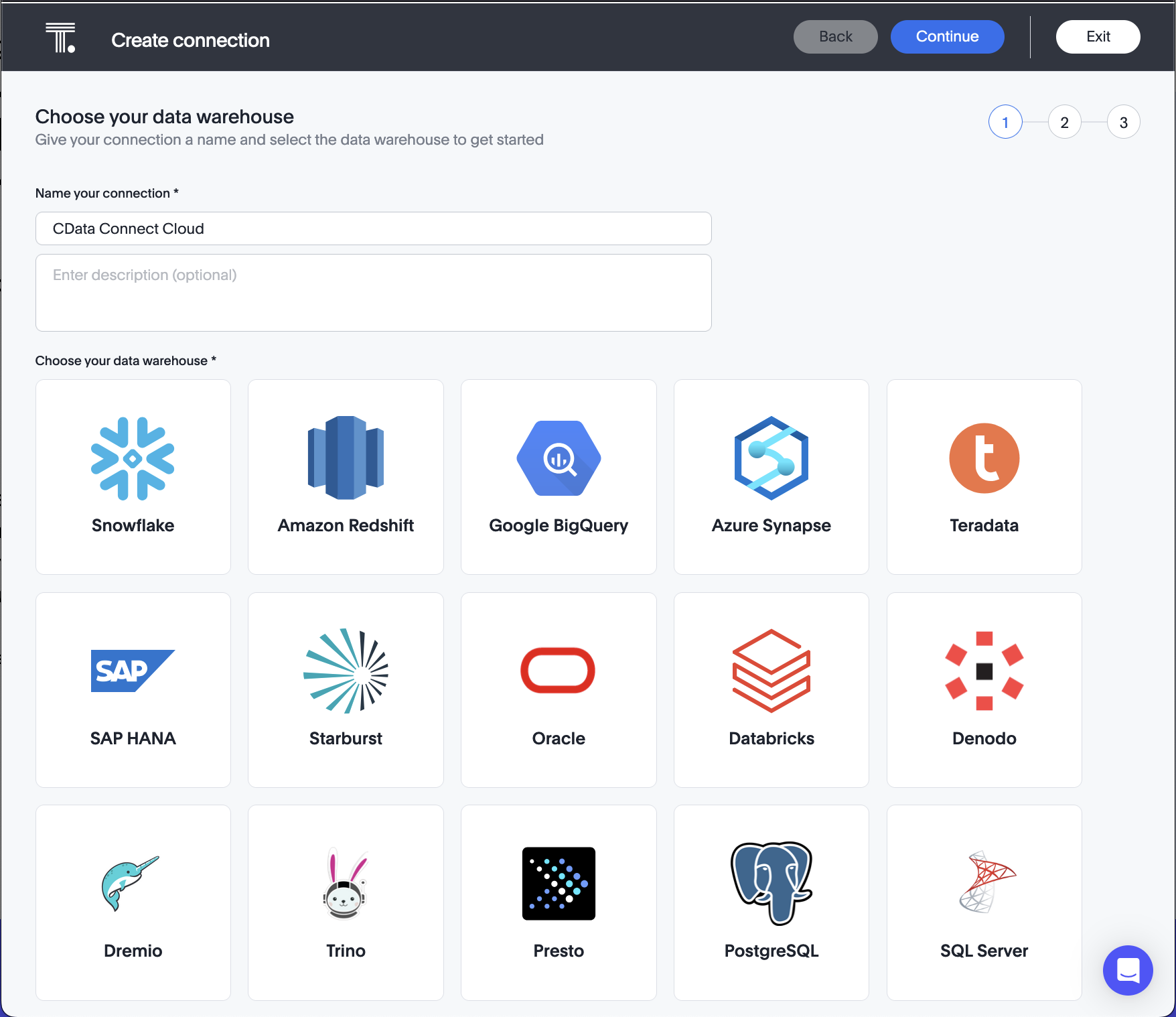
- Click Continue on the top right.
- Enter the connection settings:
- Host: enter the Virtual SQL Server endpoint: tds.cdata.com
- Port: : enter 14333
- Username: enter your CData Connect Cloud username. This is displayed in the top-right corner of the CData Connect Cloud interface. For example, user@domain.com.
- Password: enter the PAT you generated on the Settings page.
- Database: enter the Connection Name of the CData Connect Cloud data source you want to connect to (for example, Domino1).
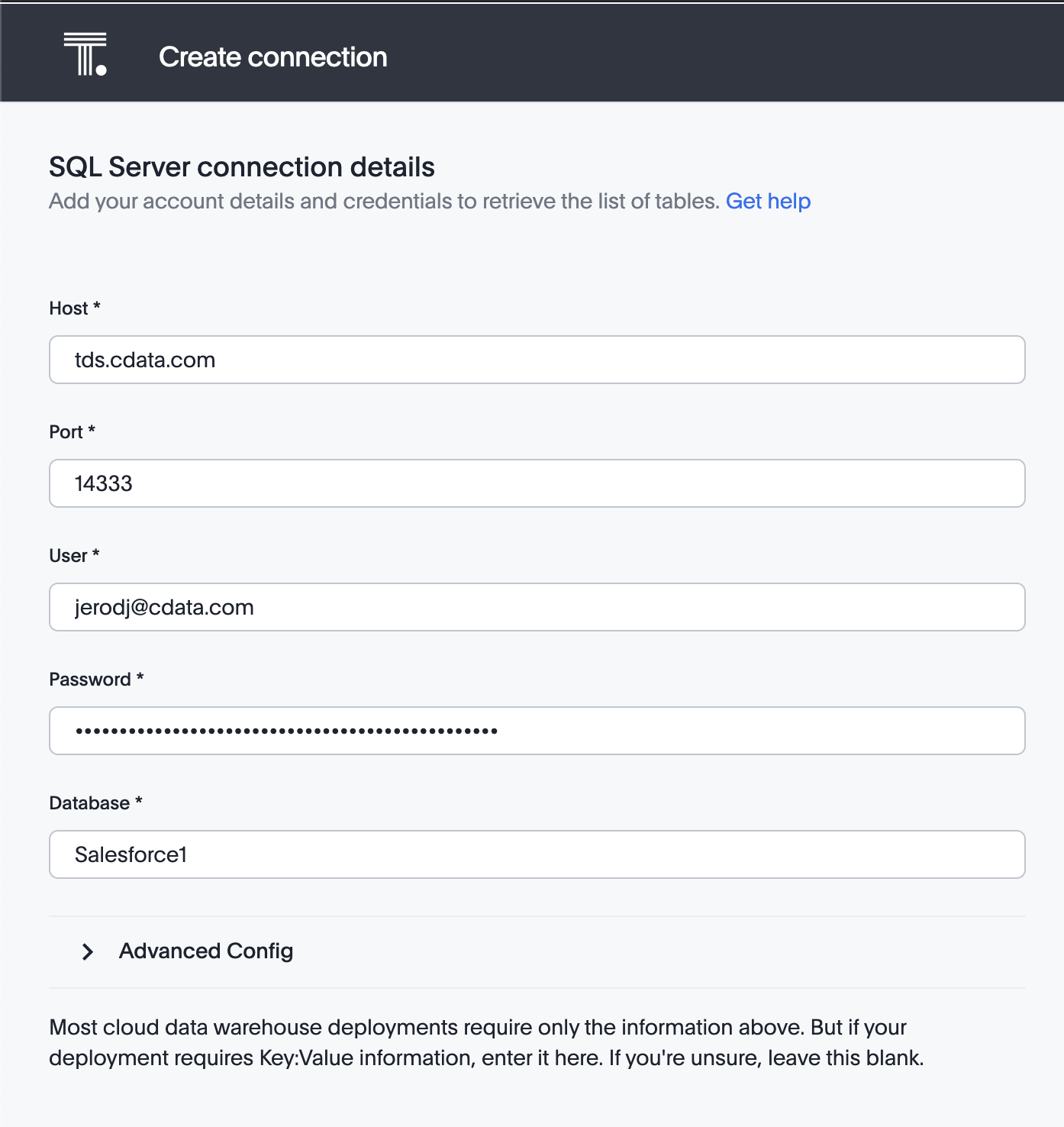
- Click Continue.
- After connecting successfully, you will be able to choose which tables to include.
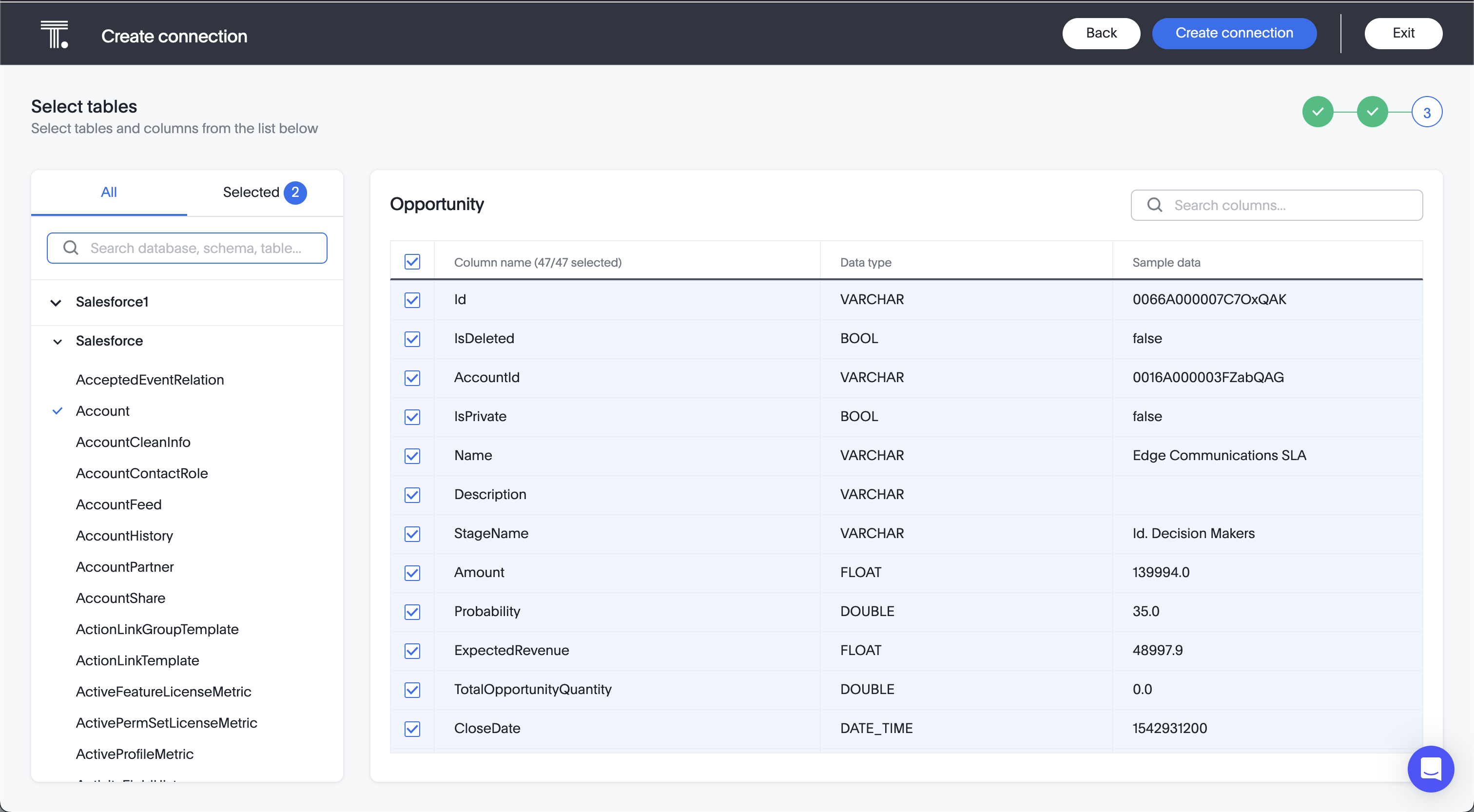
- Click Create Connection.
After you successfully configure your connection, you can build models, search, and visualize your HCL Domino data.
Real-Time Access to HCL Domino Data from Cloud Applications
At this point, you have a direct, cloud-to-cloud connection to live HCL Domino data from ThoughtSpot. You can model, search, and visualize your data from ThoughtSpot . For more information on gaining live access to data from more than 100 SaaS, Big Data, and NoSQL sources from cloud applications like ThoughtSpot, refer to our Connect Cloud page.

